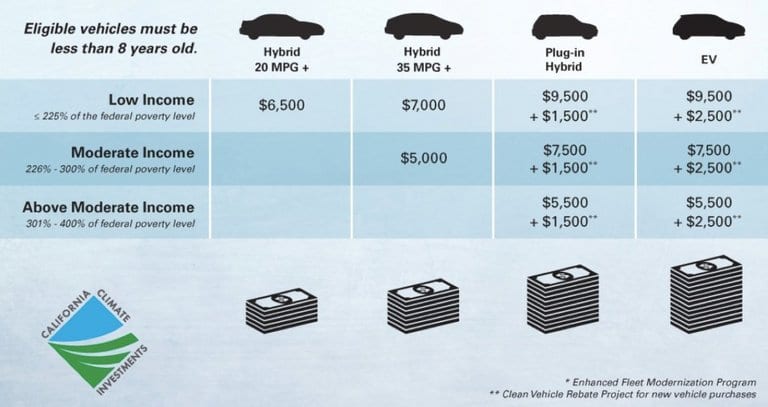Electric cars reduce both oil use and global warming emissions and are cheaper to operate than gasoline-powered vehicles. However, electric cars can cost more to buy than a conventional vehicle, and this initial outlay can prevent cars buyers from choosing a vehicle that is both a greener choice and will save money in the long run.
Now California is poised to make buying electric vehicles an option for more people through new investments and incentive programs.
The state collects funds into a Greenhouse Gas Reduction Fund from the sale of carbon permits; decisions are underway about how to invest the proceeds. Transportation accounts for more than 35% of California’s climate emissions, so it makes sense to make sizeable investments in cleaning up cars, trucks, and buses. Gov. Jerry Brown has proposed putting $350 million towards these clean transportation programs for the next fiscal year to expand the number of clean cars and trucks on the road.
California has had programs in place to help make electric cars more affordable since 2010. For example, the Clean Vehicle Rebate Program (CVRP) has provided over 100,000 rebatesto buyers of plug-in hybrids and battery electric vehicles. The state will consider extending and expanding this successful program at the June 25 meeting of the Air Resources Board.
Incentive program modifications will expand access to electric cars
To grow the number of electric vehicle buyers, the board is considering several initiatives specifically targeted at less affluent car shoppers. This is a critical step because offering incentives to lower-income people will allow them to reap the benefits of electric vehicle ownership and put them on the road to long-term fuel savings.
For example, the CVRP program would add an additional $1,500 rebate for qualifying low-income buyers of both plug-in hybrid and battery electric cars, financed in part by a new provision eliminating rebates for the highest-income EV purchasers. Previously, the wealthiest consumers did not face an income cut-off for claiming a rebate.
In addition to the CVRP incentive, the Air Resources Board plans to supplement an existing “cash for clunkers” program (the Enhanced Fleet Modernization Program) with a new voucher that lets qualifying Californians trade in polluting older cars for new electric vehicles. Participants in disadvantaged communities within areas with the worst air quality (Central Valley and Los Angeles) can get up to $12,000 towards a newer clean car, and will also save money by replacing gasoline with cheaper electricity.

Getting older cars off the road can be a very effective strategy for reducing air pollution, as vehicles that are 20 years old and older account for only 5 percent of all miles traveled in California, but are responsible for 40 percent of daily smog forming emissions from motor vehicles.
Investments in cleaner freight to accelerate low and zero-emission technologies
Cars are not the only vehicles getting cleaner, as California makes investments to clean up trucks, buses, and freight. The majority of the funding is directed towards communities that bear the brunt of current air pollution, like the areas surrounding ports, rail yards, and freeways. Clean freight projects will help companies add electric and hybrid trucks to their fleets to reduce the amount of diesel that is burned.
I asked my colleague Don Anair, a freight expert, about this and he said: “ The trucks, trains and ships that move goods in California are responsible for an estimated $20 billion in air pollution-related public health costs each year and are a growing source of climate emissions. These early, targeted investments in cleaner freight technologies will help speed commercialization and deployment that are needed to meet California’s air quality and climate challenges over the next several decades.”
Extending existing programs, combined with the innovative new efforts targeting lower income Californians will bring more potential buyers into the EV market and continue the efforts to clean up transportation in California.
Source: UCSUSA. Reproduced with permission.










